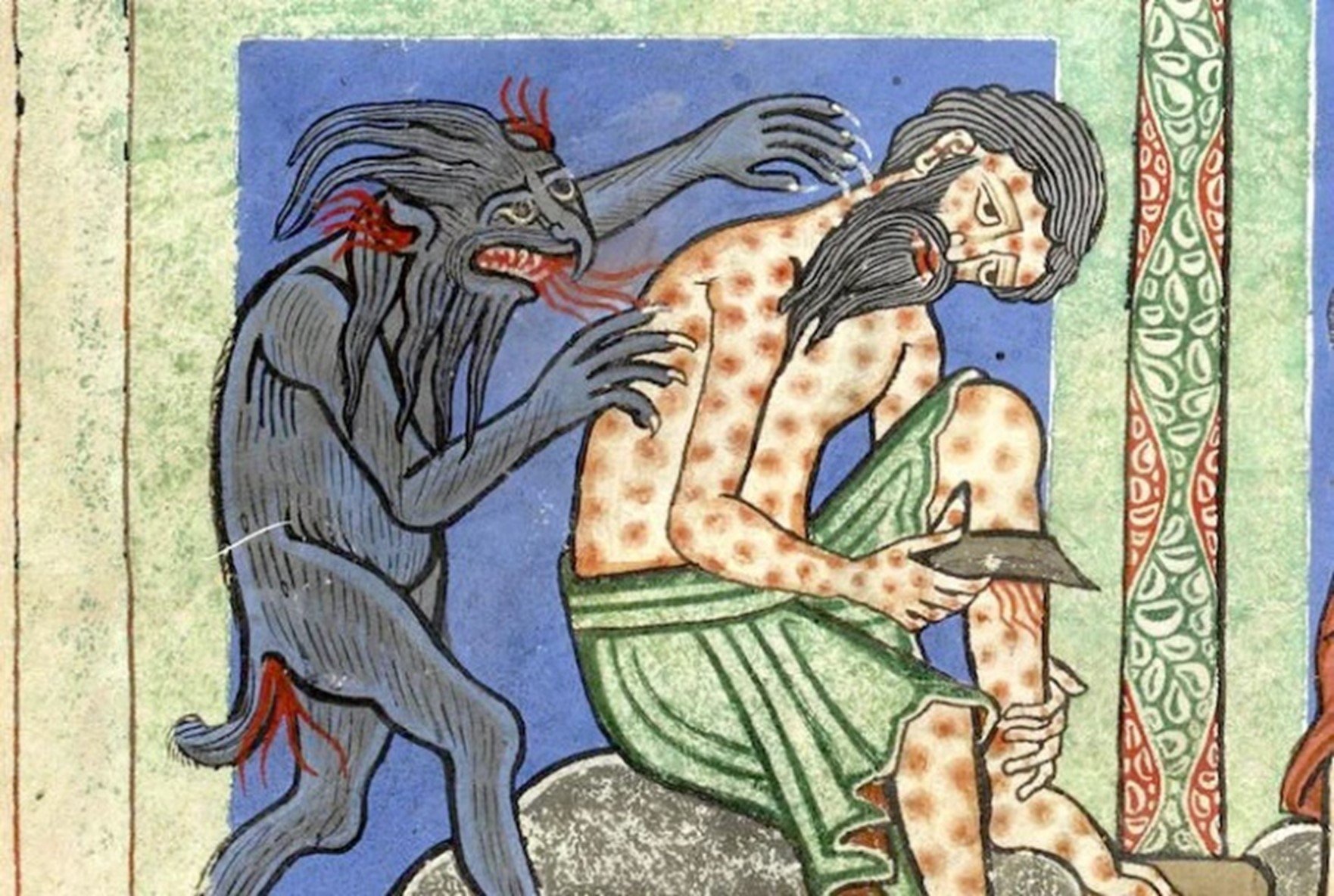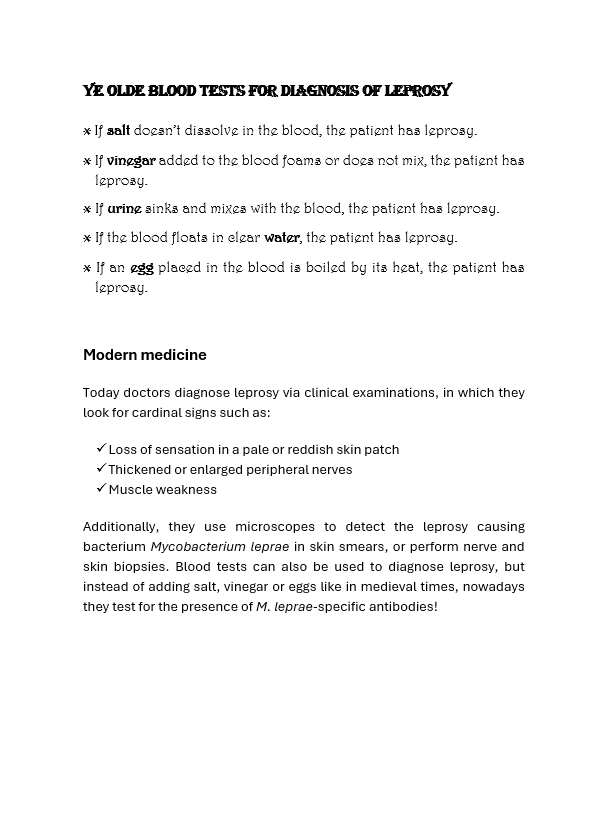
Horror Show – Leprosy
Medieval beliefs versus modern medicine
Leprosy, also known as Hansen’s disease, is an ancient disease that has haunted humanity for much of its history. It is caused by Mycobacterium leprae and spread by coughs and sneezes.
The display featured a mannequin dressed up in a medieval gown, standing next to jars illustrating medieval beliefs on where the disease came from and how to diagnose and treat it.
Posters introduced the disease itself and contrasted ancient beliefs against the advances of modern medicine.
Materials to download, in English and Welsh:
Ancient is no understatement – skeletal remains with signs of leprosy and molecular evidence show that the disease is at least 40,000 years old. Leprosy is mentioned in both archaic medical texts and religious scripture, which both paint a picture of a terrifying ailment. The bad reputation of leprosy isn’t because it’s highly infectious or deadly – it’s due to the disfiguring and disabling symptoms and complications.
The disease is characterised by skin lesions, deformities of hands and feet, nasal septum collapse and nerve damage.
Leprosy was highly stigmatised throughout history. In medieval Europe, people with the disease were often exiled, had to announce their presence with a bell and a cry of “Unclean!”, and could even be declared dead in a special ritual!
Although leprosy is often thought of as an ancient disease, it still exists today. Around 200,000 people are diagnosed with leprosy each year, and scientists believe many more go undiagnosed, with most cases occurring in South America, Asia and Africa.
It is now understood that leprosy is in fact only mildly infectious – 95% of the population have a natural immunity to leprosy and it takes a month of prolonged contact with someone with untreated leprosy to catch the disease. Most importantly, leprosy is now curable with antibiotic intervention.
YE OLDE CAUSES OF LEPROSY
- Air from rotting corpses
- Hot air
- Cold air
- Donkey meat
- Lion meat
- Hare meat
- Overabundance of black bile
- Gluttony
- Drunkenness
- Insomnia
Modern medicine
Today we know that leprosy is caused by a bacterium called Mycobacterium leprae. This microbe is an obligate intracellular organism, meaning that it needs to enter host cells to survive, particularly skin cells and Schwann cells (a type of nerve cell).
Leprosy is a contagious disease and although its transmission is difficult to track due to its average incubation time of five years (!), experts believe that it is transmitted by air droplets from coughs and sneezes, and not, as many think, by physical contact with leprosy patients.
Although leprosy is not transmitted by any of the animals listed above, it can be contracted by contact with, and consumption of, armadillos!
YE OLDE BLOOD TESTS for DIAGNOSIS OF LEPROSY
- If salt doesn’t dissolve in the blood, the patient has leprosy.
- If vinegar added to the blood foams or does not mix, the patient has leprosy.
- If urine sinks and mixes with the blood, the patient has leprosy.
- If the blood floats in clear water, the patient has leprosy.
- If an egg placed in the blood is boiled by its heat, the patient has leprosy.
Modern medicine
Today doctors diagnose leprosy via clinical examinations, in which they look for cardinal signs such as:
- Loss of sensation in a pale or reddish skin patch
- Thickened or enlarged peripheral nerves
- Muscle weakness
Additionally, they use microscopes to detect the leprosy causing bacterium Mycobacterium leprae in skin smears, or perform nerve and skin biopsies. Blood tests can also be used to diagnose leprosy, but instead of adding salt, vinegar or eggs like in medieval times, nowadays they test for the presence of M. leprae-specific antibodies!
YE OLDE LEPROSY CURES
- Leprosy is incurable.
- Those with the disease shall be exiled from the community into a leprosarium.
Modern medicine
Today we can treat and cure leprosy with a course of three antibiotics named multi-drug therapy. This treatment usually lasts 6-12 months, and contrary to what medieval doctors thought, patients do not need to be isolated during this time.
Surgery may be recommended to help with nerve damage and deformities, but early diagnosis and treatment can often prevent complications arising.
➡️ Horror Show
Return to the Horror Show starting page
➡️ Pop-Up Shop 2025
Go to the main event page of our 2025 Pop-Up Shop









